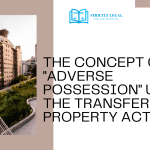‘Little Pink House’ directed by Courtney Moorehead Balaker is an adequate legal representation of the landmark precedent of Kelo v City of New London. The movie showcases the struggle of a small-town paramedic, Susette Kelo in fighting a battle against the City of New London to save her property from being acquired by the government and Pfizer Corporation via the Doctrine of ‘Eminent Domain’. The Doctrine of ‘Eminent Domain’ has been enumerated in the Fifth Amendment of the U.S Constitution under which a sovereign above government can acquire private property for “public purposes”.
This Article was submitted by PALAK SARASWAT
The doctrine is based on two principles that are ‘Salus populi suprema lex esto’ which means that welfare of the people is the paramount law and ‘Necessitas publica est major quam privata’ which means that Public necessity is greater than private necessity. The Supreme Court’s decision was highly disapproved as the acquisition of New London by the government for purposes of increasing tax revenue was fuelled by personal motives, which was given more weightage than the social impact of the project. The present article attempts to elucidate the fate of the ‘Little Pink House’ if it had been under the Indian Jurisdiction.
A distinction can be made in the outcome of the case depending on the application of the Land Acquisition Act of 1894 and The Right to Fair Compensation and Transparency in Land Acquisition, Rehabilitation and Resettlement Act of 2013. If the case of ‘Little Pink House’ is considered under the act of 1894 then the outcome would have been similar to that of the U.S. Supreme Court due to the similarity of laws in both jurisdictions related to the doctrine of Eminent Doctrine. Under the act, as ‘consent’ of the affected families is not considered in the process of land acquisition, similarly, the consent of the residents of New London would not have mattered. Moreover, due to lack of consent, the affect families would have felt the decision to be arbitrary and unfair which would also have resulted in large-scale protests. However, as fundamental changes were drafted in the Land Acquisition, Rehabilitation, and Resettlement Act, 2013, the circumstances would have been a bit different.
The prerequisite condition for the acquisition of land under the LARR 2013 Act is the Consent and the Social Impact Assessment of the land acquisition on the community. Section 2(2) of the LARR Act of 2013 states that any land acquisition by the government for Public-private partnership should require the consent of 70 % of the affected families and for the purposes of a private company, 80% of the consent is required. By accounting the same principle in the present case, as the land acquisition was for the purpose of Public-Private Partnership with Pfizer Corporation, 70% of the consent was required for acquisition and as half of the affected families of New London were not in favor of the acquisition, the City of New London would not have been able to acquire the land under the doctrine of Eminent Domain.
The second pre-condition that is the Social Impact assessment is significant in striking a balance between economic development and the social repercussions of the same. Chapter II Part B of the LARR 2013 enshrines the provisions related to the social impact assessment. If the expert committee formed under this section reports that the potential benefits outweigh the social costs and adverse impacts, then the land acquisition by the government would be justified and valid. In the present case, if the expert committee report had concluded that the social costs exceed the benefits for the development of the Pfizer corporation project then the government would have been justified in acquiring the land for development purposes and for the welfare of the society.
Section 15 of the LARR act focuses on hearing objections with regards to the area and sustainability of the land proposed, the justification offered for ‘public purpose’, and the findings of the social impact assessment. This section aims to bring more accountability from the government in acquiring the land and also more inclusivity of the community in the land acquisition process. Moreover, it provides a platform for the grievances of the affected families to be heard and redressed.
It was held by the Supreme Court in Shiv Singh v State of H.P., that compliance with the procedure of hearing of objections is important to make the land acquisition legal and in conformity with the law. If the grievances of affected people such as that of Susette Kelo would have been heard and effectively redressed by the government, then the circumstances would have been distinct. LARR Act also provides for compensation of not only the value of the land but also the Rehabilitation and the Resettlement costs incurred by the affected families which stands in sharp contrast to U.S. law under which only the value of the land is compensated.
‘Little Pink House’ is an appropriate representation of the struggle of people against the laws like Eminent Domain in the United States. Moreover, it sheds light on the legal framework of the United States and the precedent of Kelo v City of New London. The various efforts done by the Indian lawmakers to include the voices of the affected families and increasing the accountability from the government have paved a way for the doctrine of Eminent Domain and the policies of land acquisition to not be exploitative and oppressive. Therefore, in the Indian context, the outcome of the case of the ‘Little Pink House’ would have been distinct from that of the movie.

Users not registered with Strictlylegal can Email us their content and the same are posted through this account. In case of abuse, kindly let us know at [email protected]





